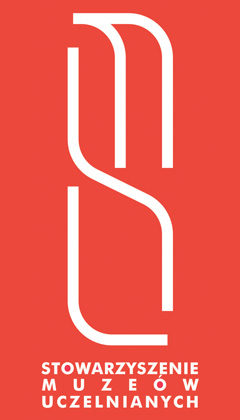Natural History Collections
ul. Uniwersytetu Poznańskiego 6
61-614 Poznań
Tel. (61) 829 56 77
www.zbioryprzyrodnicze.amu.edu.pl
Free admission
Mondays – Saturdays: 9 am – 6 pm
Guided tours only (advance
booking is essential. Please call or write to reserve a slot. No more than 15 people allowed per group).
Director: Prof. Szymon Konwerski
Staff: prof. Jerzy Błoszyk, Michał Kupczyk PhD, Anna Rusińska PhD, Jacek Wendzonka PhD, Hanna Wyczyńska MA, Aleksander Dembiński MA, Joanna Gogol MA, Krystyna Ziembikiewicz MA, Teresa Lisowska MA, Tomasz Rutkowski MA
The Natural History Collection is a museum which was established within the Faculty of Biology at the Adam Mickiewicz University in Poznań in 2004. Its basic task is to amass, safeguard, process and make both scientific and didactic collections accessible to others. In addition, it collects cartographic data and iconography related to nature and also creates sources of taxonomic information. It disseminates and popularizes knowledge about biodiversity and natural history museums, and participates in educating society about the natural environment, in a broadly understood scope. It provides the material base for research conducted in the university’s Faculty of Biology and other scientific
institutions both in Poland and abroad. It is located in a modern building that meets all the specifications for storing natural history collections: airconditioned rooms (approx. 600 sq. metres) designated for individual types of collections (zoological, botanical, osteological and palaeontological) and suitably equipped laboratories enabling the study of the collections. The Natural History Collections are a continuation of the tradition of natural history museums in the Wielkopolska (Greater Poland) region spanning more than 160 years. As an entity that meets the requirements for protecting and safeguarding of valuable exhibits, the Natural History Collections are by decision of the Ministry of
the Environment, authorized to store specimens protected under CITES (Convention of International Trade in Endangered Species of Wild Fauna and Flora – also known as the Washington Convention) seized by customs services. It is one of the few museums in Poland to have been assigned a special number by the Australian government that allows the direct exchange of museum specimens. Currently the digitization of the Natural History Collections’ resources is being carried out under the ‛AMUNATCOLL’ Project financed by the Ministry of Science and Higher Education Poland. Collections that are particularly valuable both from a scientific and historical perspective, due to their state of preservation, completeness of the documentation and their uniqueness on a national and global scale, include:
– Prof. Stanisław Lisowski’s herbarium of vascular tropical plants, which contains approx. 150,000 exsiccatae, including more than 100 type specimens. It is one of the largest collections of African plants in Europe.
– The herbarium of vascular plants of the Department of Plant Taxonomy includes approx. 180,000 exsiccatae, the oldest of which dated back to 1792.
– A herbarium of Mosses with more than 90,000 envelopes, 50 of which are type specimens.
– Prof. Izabela Dąmbska’s herbarium of Chara (stoneworts) one of the largest of its kind in Europe, which contains type specimens of most European Chara.
– A collection of soil samples including more than 30,000 samples collected on all the continents, comprising the basis for acarological research within the so-called school of Polish acarology; more than 1,000 taxonomic and faunal publications have been published based on the collection.
– Arachnological collections: mainly mites, spiders and pseudoscorpions (several thousand species from around the world, including the largest collection of Acari, suborder Uropodina, in Europe) containing more than 2,000 types.
– Malacological collection (including the collections of Prof. Jarosław Urbański, Prof. Jan Rafalski and Rev. Jerzy Kaczmarek) containing more than 100,000 specimens of molluscs, including type specimens.
– Arkady Fiedler’s entomological collections collection on his first trip to South America.
– Burchard Schrenck’s collection of butterfiies dating from 1872–1885.
– Theodor Lackschewitz’s collection of beetles collected in the vicinity of Riga in the years 1895–1903.
– Dr Janusz Sosiński’s collection of butterflies (most from the Wielkopolska region and mountainous areas).
– Butterfly collection of Antoni, Anzelm, Marceli and Rosław Lewandowski, which they began to collect at the turn of the 19th/20th century.
– Collection of butterflies of the Ornithoptera (Birdwing) genera donated by Jerzy Błaszczyk, containing specimens of most species in this genus (all are on the CITES list).
– Oology collection – more than 1,000 bird eggs, including more than 200 of species of birds which breed in Poland.
– Osteological collection consisting of human skeletons obtained from mediaeval cemeteries.









